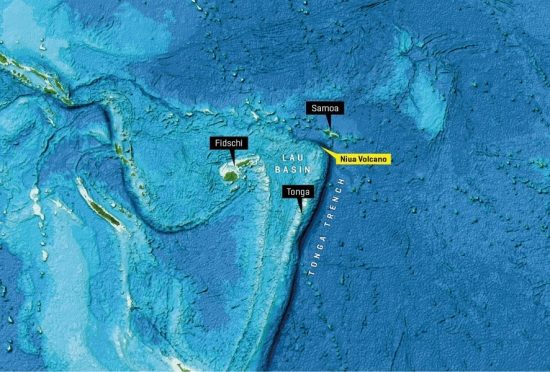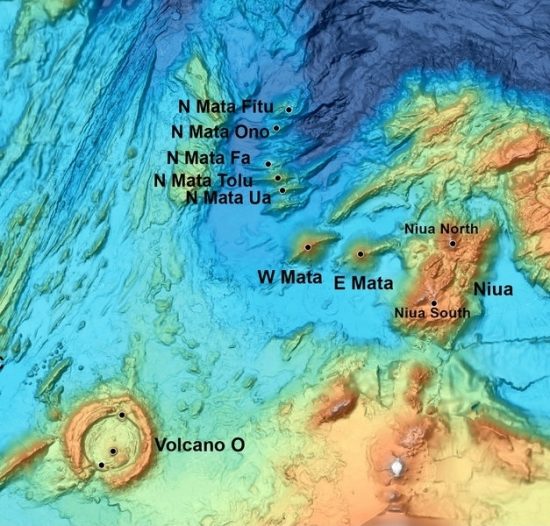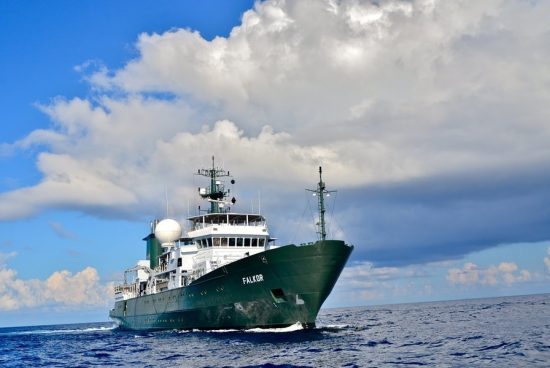




Using the latest 3-D camera technology, scientists from GEOMAR Helmholtz
Centre for Ocean Research Kiel is investigating a hydrothermal vent field at
the bottom of the Western Pacific. Thanks for modern satellite technology, the
images captured by deep-sea robots on-site can be transferred live to the
lecture facilities at GEOMAR in Kiel and the planetarium in Münster.
Metre-high
chimneys on the seabed, emitting hot, dark-coloured liquids... such is the
world of black smokers. It was not even forty years ago that we set eyes on
such structures for the very first time. At that time, scientists were cramped
into the US submersible Alvin in the East Pacific Ocean, marvelling
wide-eyed at scenes of the ocean depths through tiny portholes with fireproof
casing. Today, the exploration of the ocean depths is done via autonomous
remotely controlled drones and cable-controlled robots.
There
is much interest in hydrothermal systems due to the valuable mineral deposits
within them. Yet, they remain a mystery, and we only know the location of just
a small number of them worldwide. Many questions about the biology, geology and
geochemical processes that take place at these hot springs are still
unanswered.
Under
the management of GEOMAR, scientists from Schmidt Ocean Institute (SOI) are
currently on board the research vessel FS FALKOR, some 200 kilometres southwest
of Samoa, in the vicinity of the Niua submarine volcano.
As
principal investigator Dr Tom Kwasnitschka from GEOMAR explained, they will
attempt to digitally recreate 3-D models of the hydrothermal vents there, with
unprecedented resolution. When completed, this would be the first public-access
virtual model of an entire hydrothermal vent field.
Another
unique feature of the expedition is the round-the-clock video streaming from
both cameras mounted to ROV ROPOS and also from the ship. So, anyone interested
to tag along and follow the on-going scientific work can do so at Expeditionsblog.
In
addition, two lectures will be broadcast live at GEOMAR in Kiel and the
Planetarium Münster. Attendees can ask the scientists any questions they have
and also see the black smokers that are literally thousands of kilometres away,
said Dr Kwasnitschka. The lectures will take place this Thursday, March 24th,
10:00 to 11:00 at the auditorium of GEOMAR in Kiel. A second session will be held at 19:30 in the planetarium of the „Landschaftsverband
Westfalen-Lippe“.
The
expedition will provide fresh insights for the scientists taking part in the
expedition as well as their colleagues back home. Practically every corner of
the hydrothermal field is being surveyed via a complex process using
sophisticated cameras designed to yield a seamless visual coverage of the entire
hydrothermal vent field.
Aboard
the ship, a high-performance computer uses the images to recreate a 3-D colour
map with a photographic texture, using over one hundred thousand images. In the
later part of the expedition, the geologists, oceanic biologists and
geochemists will use the map to take samples from the site more efficiently, as
they would just go to those locations that appear promising. In addition, both
the public and scientists will be enabled to explore the deepsea landscape in
unprecedented resolution, brilliance and colour, as if the water had just been
drained.
Info:
www.geomar.de
 Mares
Mares 23rd March 2016
23rd March 2016